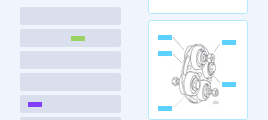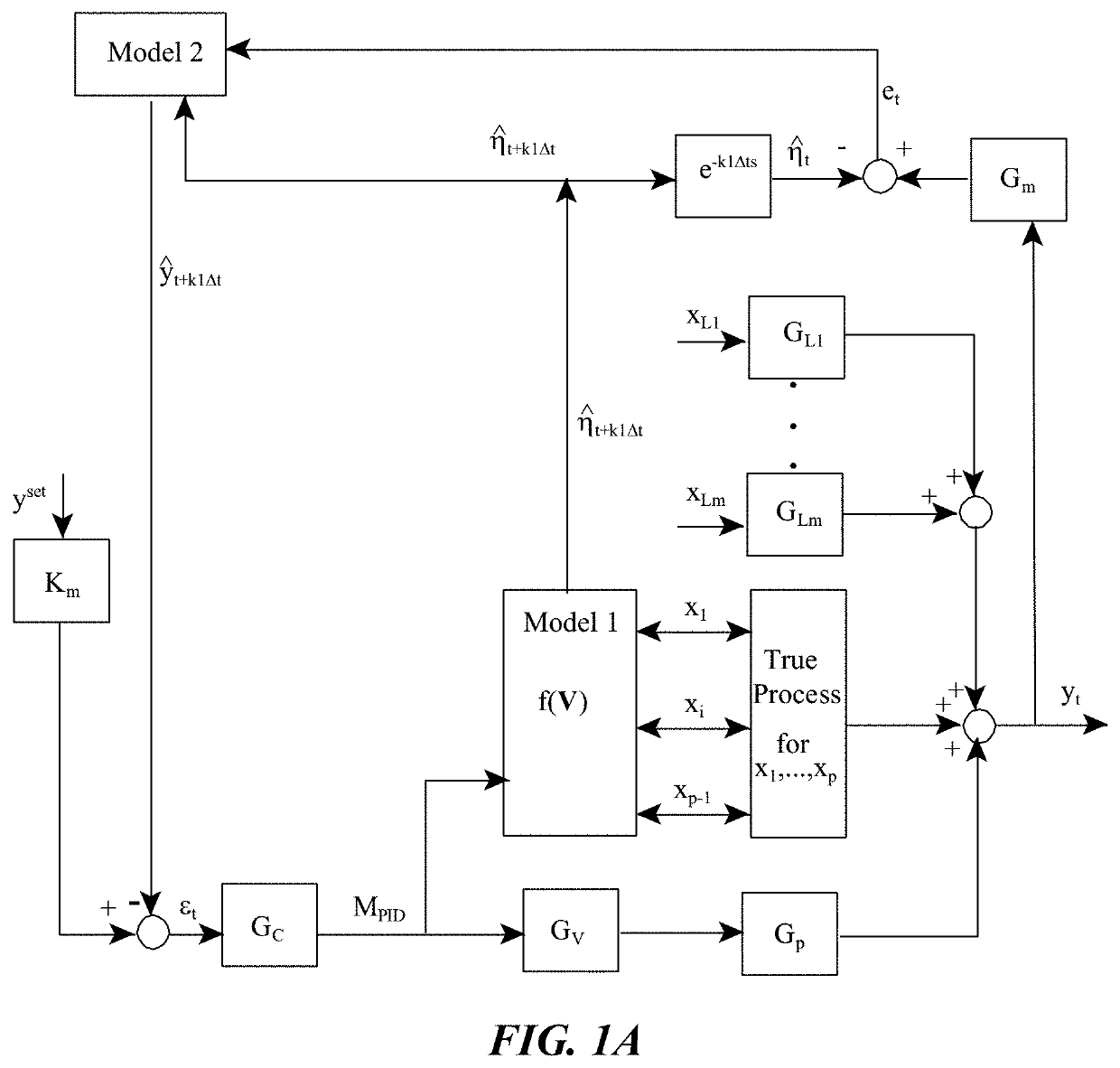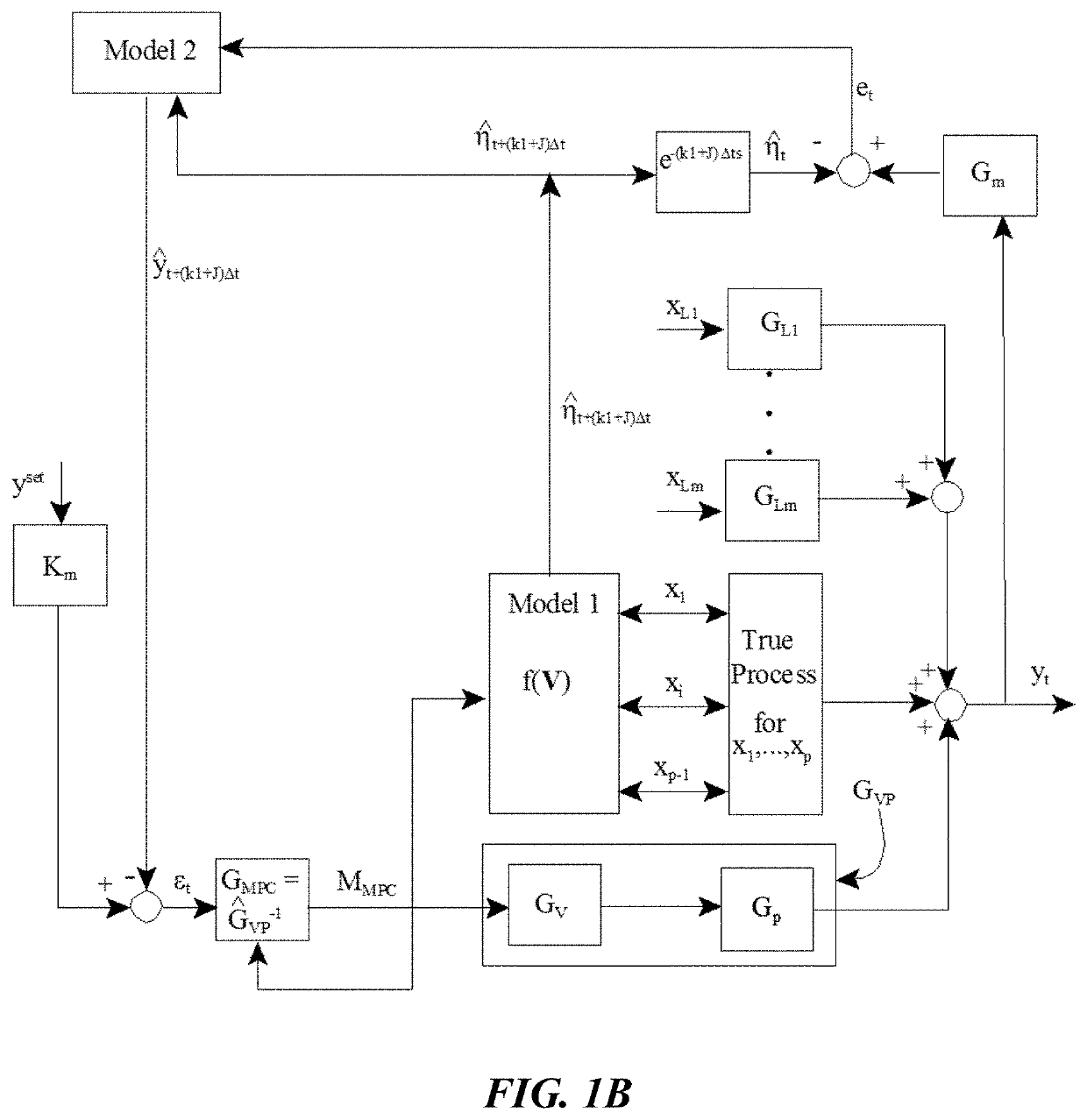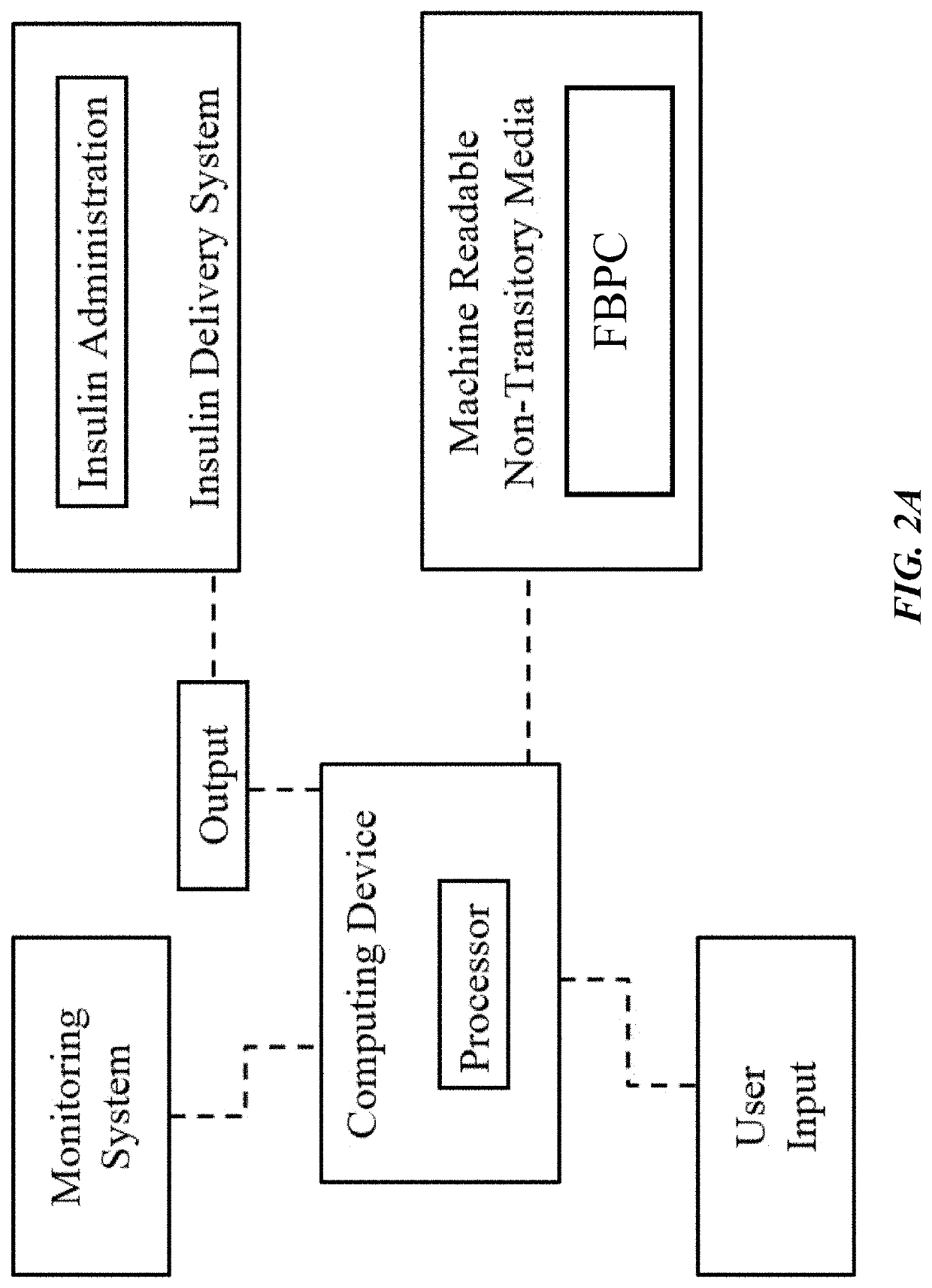Feedback predictive control approach for processes with time delay in the manipulated variable
a predictive control and process technology, applied in the field of control system, can solve the problems of high correlation, high complexity of combined effects on bgc, and inability to accurately measure and model, and the inherent glucose regulation mechanism of the system becomes dysfunctional
- Summary
- Abstract
- Description
- Claims
- Application Information
AI Technical Summary
Benefits of technology
Problems solved by technology
Method used
Image
Examples
example 1
[0081]Utilizing a continuous stirred tank reactor (CSTR) as a process model, the methods of the present invention were tested to verify Equations 1-15 and the FBPC algorithm exemplified in the block diagram of FIG. 1A. The FBPC algorithm was tested against an algorithm employing a model predictive control system as shown in FIG. 1B.
[0082]A multiple-input, single-output Wiener model as shown in FIG. 3A was used in modeling the CSTR process. Each input, Xi, has its own linear dynamic block, Gi, and each dynamic block has an intermediate, unobservable output Vi, which represents the independent dynamic response of the corresponding input. The intermediate outputs are passed through a nonlinear static gain block, ƒ(V), to produce the final measured output, y.
[0083]Each dynamic block is a linear ordinary differential equation. In this Example, the manipulated variable, M, has first-order-plus-dead-time (FOPDT) dynamics shown in Eq. (16)
τ1dv1(t)dt+v1(t)=x1(t-θ1)(16)
where subscript ‘1’ den...
example 2
[0096]In this Example, the present invention's modeling approach is shown to accurately predict BGC 30 and 60 minutes into the future for Type 1 diabetes subjects, which is necessary to obtain an accurate prediction of FBE to effectively manipulate insulin flow rate at the present time for optimal control of BGC. This Example is an open-loop modeling study, and not a closed-loop control study.
[0097]For this Example, the process model utilizes a Wiener model with a semi-coupled network for BIC and BGC as illustrated in FIG. 3B. The semi-coupled network allows modeling of blood insulin infusion rate and glucose interaction. BIC is not measured, and therefore the approach uses a “pseudo” BIC variable that allows the use of a modeling structure that is hypothesized to provide characteristics for BGC that are more physiologically correct than a Wiener-only modeling technique.
[0098]This Example employs the two-step modeling approach outlined in Example 1: applying a noise model structure ...
example 3
[0107]In this Example, a diabetes simulator developed by UVA / Padova, and approved by the FDA, was used to test the present invention. This simulator provides a non-human methodology to test different BGC control algorithms and is considered a valid substitute for animal trials in the early stages for development of an artificial pancreas. This diabetes simulator was used to generate subject data for a comparison of MPC and FBPC with all things being equal except for the differences in the control algorithms. The fitted predictive model used by both methods is the same and predicts G accurately, thus any difference in control performance is due to differences in the control algorithms.
[0108]The FBPC scheme is illustrated in FIG. 13 and is described in FIG. 2. It should be noted that in Example 1 the FBPC method was used in a CSTR system and in this Example the inputs and outputs are specific to controlling BGC by varying insulin flow rate. The present system utilizes a Wiener Model a...
PUM
 Login to View More
Login to View More Abstract
Description
Claims
Application Information
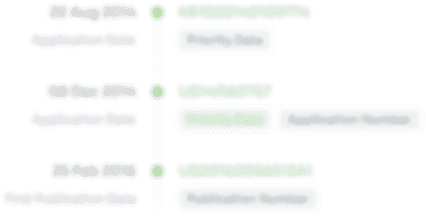 Login to View More
Login to View More - R&D
- Intellectual Property
- Life Sciences
- Materials
- Tech Scout
- Unparalleled Data Quality
- Higher Quality Content
- 60% Fewer Hallucinations
Browse by: Latest US Patents, China's latest patents, Technical Efficacy Thesaurus, Application Domain, Technology Topic, Popular Technical Reports.
© 2025 PatSnap. All rights reserved.Legal|Privacy policy|Modern Slavery Act Transparency Statement|Sitemap|About US| Contact US: help@patsnap.com
